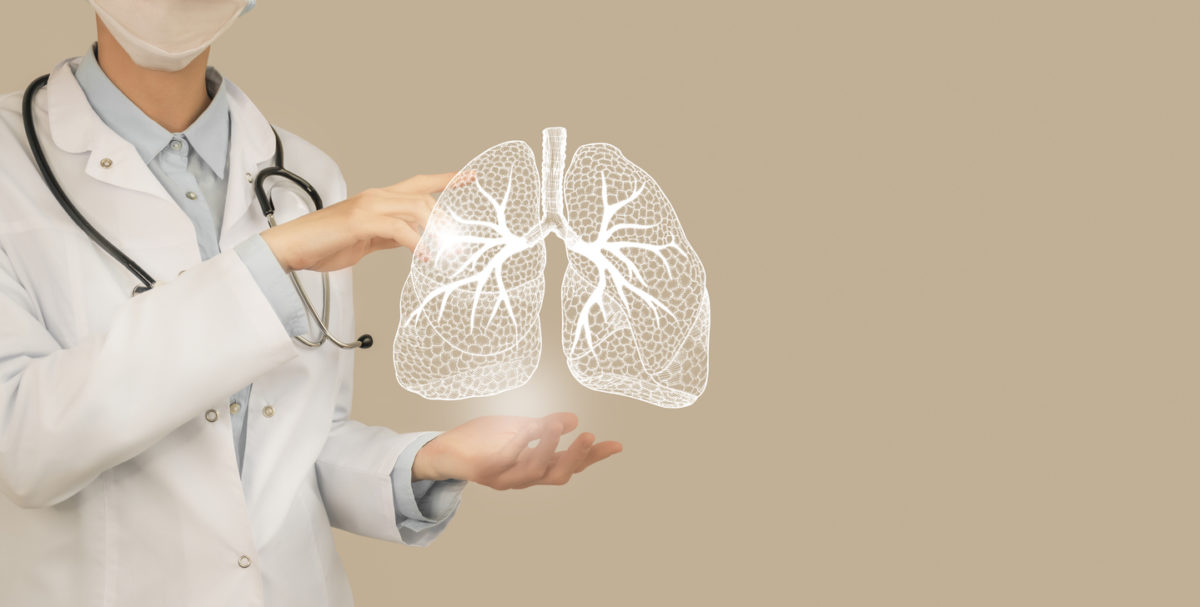Recognizing, treating chronic lung disease
By Jay Nachman
Walking. Climbing steps. Showering. Chores. Yard work.
These are the activities of daily living that a healthy senior adult should be able to do without shortness of breath. “You shouldn’t be limited at all by shortness of breath. And if you are, then it means something is going on,” said Dr. Rachel N. Criner, assistant professor of thoracic medicine and surgery at the Lewis Katz School of Medicine at Temple University.
“People might notice over time they’re not doing tasks as quickly as they used to do them or they might start modifying their daily life to accommodate their shortness of breath,” Dr. Criner said. For example, people may not realize that they’re cutting out their daily walk because they are short of breath.
If someone has those symptoms, they should see a doctor right away, Dr. Criner said. Other symptoms of lung disease are a wet or dry cough, wheezing, fatigue and pain or discomfort when breathing.
There are four types of chronic lung disease and they fall into three categories. One category affects the airways, another affects lung tissue and the third affects the blood tissue. The most common lung disease is COPD, or chronic obstructive pulmonary disease. COPD affects both the airway and the lung tissue and it is the fourth leading cause of death in the United States.
The other three diseases are pulmonary fibrosis, which affects the lung tissue; lung cancer, which also is a disease of the lung tissue; and asthma, which is a chronic lung disease.
With the exception of asthma, lung diseases most often appear in the aging population. Dr. Criner said most of her patients with chronic lung diseases are 65 and older.
The most obvious risk for lung disease is smoking, which is also a primary cause of COPD and lung cancer. The causes of pulmonary fibrosis are varied but could be related to a person’s environment, such as occupational exposure to stone, glass, asbestos or dust. Pulmonary fibrosis can also be idiopathic, meaning the cause cannot be determined.
The American Lung Association notes that air pollution poses a serious threat to our nation’s health by harming lungs and increasing the risk of lung disease, including COPD and asthma. The association works to protect public health from unhealthy air pollution by supporting the Clean Air Act and pushing the U.S. Environmental Protection Agency to ensure everyone in the nation has air that is safe and healthy to breathe. This includes encouraging more protective limits on ozone and particle pollution, reducing power plant carbon emissions, and cleaner gasoline and vehicle standards.
Asthma can be caused by allergies or by a genetic disposition. As with pulmonary fibrosis, asthma can also be caused by exposure to items in the environment.
Typically, asthma can be managed through medication and other treatments. But there are new treatments, called biologics, that target the inflammation that causes asthma and they have significantly decreased asthma attacks and lessened the shortness of breath that the disease produces.
If lung cancer is diagnosed early enough, it often can be cured with surgery, chemotherapy and radiation. Lung cancer can also be treated less invasively with specific medicines that target the genetic makeup of the cancer.
There is no cure for COPD, which worsens over time, but it can be treated with medicine. A new minimally invasive treatment, Dr. Criner said, places a tiny one-way valve in the most diseased part of the lung “so the healthier lung can work better. Every patient with COPD at a certain stage should be screened to see if they’re eligible for bronchoscopic lung volume reduction. This surgical procedure has shown great benefit in lung function, in helping shortness of breath and quality of life. People who have had lung volume reduction can walk further and breathe easier through this surgical procedure.”
Pulmonary fibrosis is a serious lung disease. Someone diagnosed with pulmonary fibrosis should immediately seek evaluation at a center that specializes in the disease. A lung transplant may have to be considered, Dr. Criner said. There are new medications available that slow the progression of lung dysfunction and other medicines currently in clinical trials that have shown promise in stopping the progression of the disease.
Dr. Criner’s oldest patient with pulmonary fibrosis who received a lung transplant was in his early 80s. “We don’t have an age limit to get evaluated for a transplant,” she said.
Quality care for lung disease available in Philadelphia
November is Lung Cancer Awareness Month, a designation to bring attention to the disease. Fortunately, in Philadelphia there are many resources to help treat lung cancer and other lung diseases.
Fox Chase Cancer Center
Fox Chase Cancer Center develops a customized lung cancer treatment plan to care for each patient.
Fox Chase’s medical team has expertise in a variety of areas. These team members include physicians, surgeons, researchers, nurses, patient navigators and a variety of specialized support staff.
Whether a patient’s lung cancer is early-stage or more advanced, the treatment plan will be designed to control the cancer, preserve lung function and reduce the risk of recurrence. For information, call 1-855-827-1695 or visit FoxChase.org.
Temple University
Eligible Philadelphia area residents between the ages of 50 and 80 who are or were long-term smokers can receive a low-dose CT scan at one of five Temple University locations. To be eligible, patients must currently smoke or have quit within the last 15 years and have a smoking history of at least 20 pack-years, which is the number of years smoked multiplied by the number of packs smoked per day. For information, contact the Temple Lung Cancer Screening Program at 1-800-836-7536 or TempleHealth.org.
Jefferson Health
Jefferson Health’s Jane & Leonard Korman Respiratory Institute screens and diagnoses lung cancer. The institute’s medical staff works closely with patients to create an individualized care plan based around lifestyle and goals. For information, call 1-800-JEFF-NOW or visit JeffersonHealth.org/clinical-specialties/respiratory-institute.
Penn Medicine
Penn Medicine’s Harron Lung Center takes a collaborative, comprehensive and personalized approach to lung health. The center offers prevention resources, early detection to advanced diagnostics, innovative treatments, and cutting-edge research. For information, call 1-800-789-7366 or go to PennMedicine.org/lung.
Jay Nachman is a freelance writer in Philadelphia who tells stories for a variety of clients.




